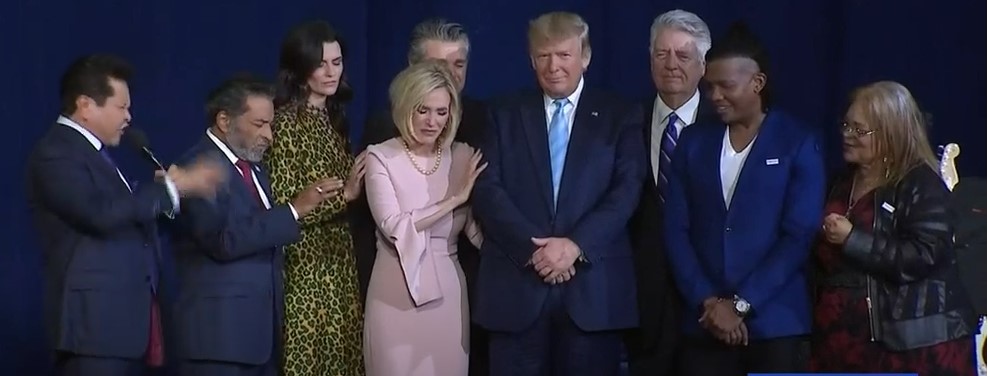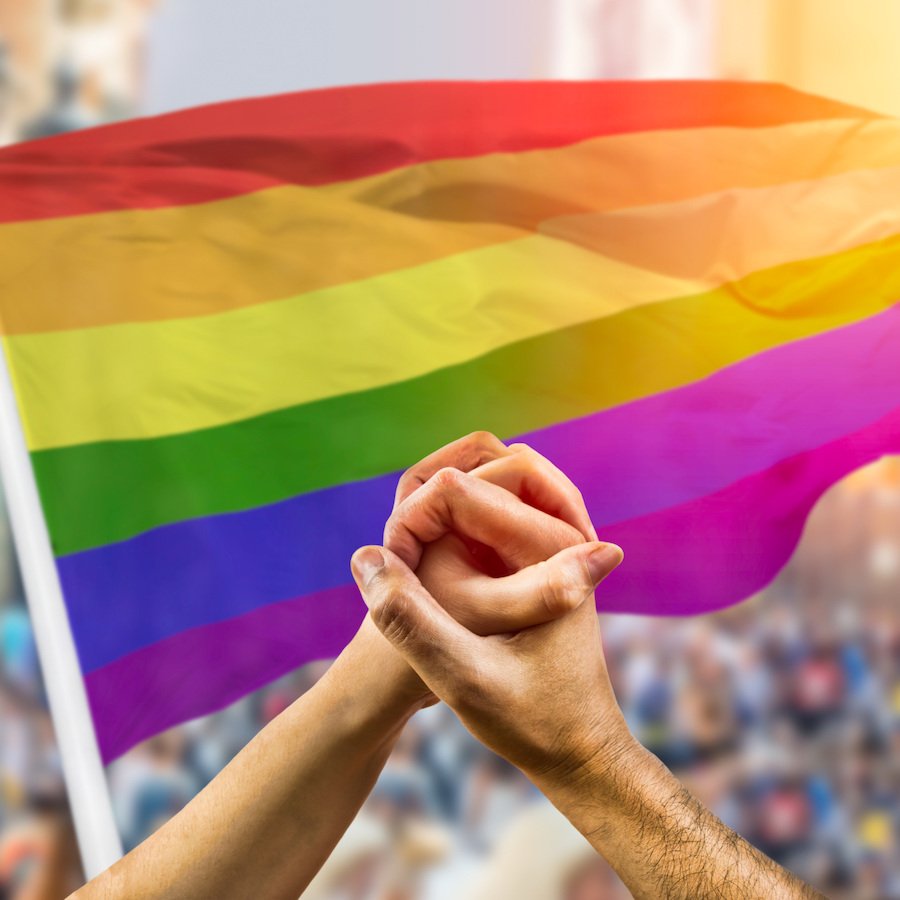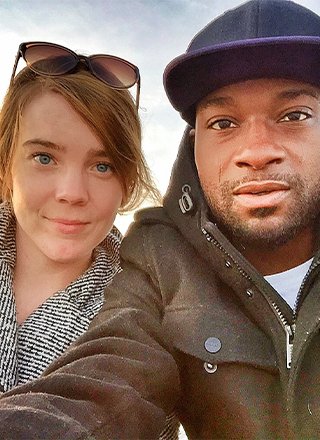Speaking to a group of evangelical supporters at a Miami mega-church Jan. 3, President Donald Trump promised that something big was afoot concerning the issue of school prayer.
“Very soon I’ll be taking action to safeguard students’ and teachers’ First Amendment rights to pray in our schools,” Trump said during the event at King Jesus International Ministry. “They want to take that right along with many other ones.”
Thirteen days later, on Religious Freedom Day, Trump unveiled the news: The U.S. Education Department and the U.S. Justice Department released a 15-page document providing guidance on prayer and other religious activities in public schools.
While Trump made a big deal about the release of the document, it was hardly the Earth-shattering move he portrayed it to be. Federal law requires that administrations periodically issue religion-in-public-school guidelines. The administration of President Bill Clinton first issued such guidelines in 1995. They were reissued in 1998, and in 2003, the George W. Bush administration issued its own guidelines.
The Trump guidelines, which were vetted by Attorney General William Barr, largely tracked those previous versions but did add some problematic passages. Chiefly, the document requires states to establish mechanisms for collecting complaints about alleged violations of religious freedom from public school students and staff. State officials are required to send these complaints to the federal government, even if they believe they’re without merit.
Americans United’s Legal Department analyzed the guidelines and found several other troubling areas
• The guidelines state that students have an absolute right to “attempt to persuade their peers about religious topics just as they do with regard to political topics.” Interpreted broadly, this rule could open the door to religiously based harassment and bullying. Equating religious speech with political speech also invites students to introduce religious topics into classrooms at times when it may not be appropriate.
• The guidelines imply that “student-initiated prayer” is permissible at school-sponsored events, a standard that has never been adopted by the Supreme Court.
• The guidelines cite a 1984 federal law known as the Equal Access Act to assert that student-led religious clubs may deny leadership positions based on religious or moral views. In fact, the Equal Access Act does not say that.
AU also has concerns that Trump will use the guidelines to spread misinformation, such as claiming to have “restored” prayer to public schools. He has made similarly outrageous claims in the past about other church-state issues.
During his Miami speech, for example, Trump claimed once again to have done away with the Johnson Amendment, a federal law that protects the integrity of houses of worship and nonprofits by keeping them out of partisan politics. Trump did issue an executive order concerning the Johnson Amendment in 2017, but it was mostly verbiage. The Johnson Amendment is a federal law, and Trump can’t overturn it by executive fiat. Trump also repeated an often-asserted claim that Americans were afraid to say “Merry Christmas” until he took office.

Prior to the release of the prayer guidelines, Americans United expressed concern that the document would inaccurately portray the current state of the law regarding school prayer and related issues in a deliberate effort to sow confusion.
As Americans United noted on its “Wall of Separation” blog, the term “school prayer” is itself open to varying interpretations. Despite what many Americans believe, public school students have the right to pray in schools as long as their activities are voluntary and not disruptive.
Compulsory, coercive and state-sponsored prayer and Bible reading are another matter. The U.S. Supreme Court struck them down in two landmark cases from 1962 and ’63.
But the high court has never declared that public schools must be “religion-free” zones. Public schools may teach about religion as an academic subject, for example. Also, many students in secondary schools have the right to form religious (or non-religious) clubs. These clubs, which meet during non-instructional time, are run by students, and attendance is voluntary.
The high court has, however, drawn a firm line against any religious activity in public schools that is considered coercive. The court has done this in part to protect the rights of young people and their parents. The court’s decisions about school prayer leave religion where it best belongs – in the hands of students and parents who, if they choose, are free to consult with the religious or ethical leaders of their choosing.
Christian nationalist groups have long sought to restore official, school-sponsored prayer and Bible reading to public schools. In the wake of the school prayer decisions from the early 1960s, a flurry of constitutional amendments was introduced in the U.S. House of Representatives and Senate. Hearings were held in both chambers, but the proposals did not pass.
In 1982, President Ronald Reagan backed a school prayer amendment, which was introduced in Congress by his GOP allies. Two years later, the amendment reached the floor of the U.S. Senate where, on March 20, 1984, it failed. The Amendment received a simple majority of 55 votes, but that was 11 votes short of the two-thirds requirement to pass a constitutional amendment.
Despite what many Americans believe, public school students have the right to pray in schools as long as their activities are voluntary and not disruptive. Compulsory, coercive and state-sponsored prayer and Bible reading are another matter. The U.S. Supreme Court struck them down in two landmark cases from 1962 and ’63.
The next major development occurred in 1994, after Republicans, led by U.S. Rep. Newt Gingrich (R-Ga.) took control of the House. Gingrich was made speaker and vowed to pass a school prayer amendment. The amendment that emerged, which was drafted by Religious Right legal groups, went beyond school prayer and would have greatly eroded church-state separation. It received a vote in the House on June 4, 1998. It won majority support but fell 61 votes short of the two-thirds required for passage.
This issue of religion in public schools remains contentious. Every year, AU attorneys have to warn public school officials about the inappropriate promotion of religion.
Occasionally, the group has to go to court. Last year, Americans United secured a huge win on behalf of public school students and families in Louisiana after negotiating a settlement agreement with the Bossier Parish School Board that ensures children feel welcome and included in their own schools regardless of their religious beliefs.
Parents asserted that the school district was promoting Christianity in a variety of ways. The district agreed to settle the case and, in a consent decree filed with the federal court in January 2019, school officials acknowledged that some of their practices violated students’ constitutional right to religious freedom and agreed to take steps to correct matters.
Trump’s prayer guidelines don’t have the power to overturn court rulings, but Americans United intends to keep a close watch on developments.
Public schools, AU notes, have a legal obligation to welcome and educate children of various religious and non-religious backgrounds. Compelling students to pray or take part in other religious activities is not part of their mandate. If Trump and Barr misstate the law regarding religion in public schools, AU will quickly set the record straight.


